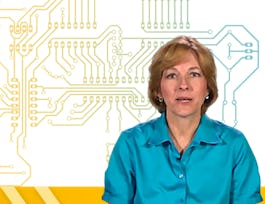In the dynamic field of HVAC technology, strategies like Demand Control Ventilation (DCV) are revolutionizing indoor air quality and energy efficiency. DCV dynamically adjusts ventilation rates based on real-time occupancy and air quality indicators, optimizing conditions for occupants while minimizing energy consumption. Adherence to codes and standards, notably ASHRAE Standard 62.1, ensures the safety and efficiency of DCV systems.
A key focus of DCV is monitoring and controlling carbon dioxide (CO2) levels, a crucial indicator of indoor air quality. Elevated CO2 levels prompt real-time adjustments in ventilation rates, preventing the accumulation of pollutants and promoting a constant supply of fresh air. This adaptive approach aligns with principles promoting occupant health and well-being. Designing ventilation rates within DCV involves considering factors such as occupancy, space size, and specific application requirements. Strategies like damper control and precise positioning efficiently meet ventilation demands. DCV's versatility extends to both Constant Air Volume (CAV) and Variable Air Volume (VAV) systems. In Constant Air Volume (CAV) systems, DCV optimizes airflow by modulating it based on real-time occupancy and air quality data. This ensures ventilation precisely tailored to the immediate needs of the space, balancing energy efficiency and air quality maintenance. In Variable Air Volume (VAV) systems, DCV adjusts the air supply to match demand, optimizing energy conservation without compromising air quality. An example illustrates the seamless integration of DCV within a VAV system, showcasing practical impact. CO2 sensors, including advanced types like nondispersive infrared (NDIR) sensors, play a pivotal role in DCV systems. Proper sensor placement ensures accurate readings, enhancing overall effectiveness by providing precise data on indoor air quality. Shifting to the broader context of HVAC, understanding fans, their history, and diverse applications is essential. Fans, integral to industrial processes and electronics cooling, have evolved with various types, including centrifugal and axial fans. Appreciating fan terminologies like pressure, flow rate, speed, and efficiency becomes vital. Centrifugal fans excel in scenarios requiring directed and pressurized airflow, while axial fans are ideal for linear airflow applications. Grasping fan terminologies is crucial for optimizing performance. The affinity laws and fan control strategies govern efficiency, providing insights into operational optimization. Fan performance curves visually depict relationships between airflow, pressure, and power consumption, aiding in selecting and optimizing fan systems. Expanding the horizon, Variable Refrigerant Flow (VRF) systems mark a milestone in HVAC technology. Evolving from traditional systems, VRF systems offer a dynamic and energy-efficient approach. Continuous advancements introduce features like individual zone control, energy efficiency, and adaptability to variable loads. The escalating demand for energy-efficient HVAC solutions underscores the need for VRF systems. Their capacity for simultaneous heating and cooling, coupled with precise temperature control, makes them preferred in various applications. Designing VRF systems involves meticulous consideration of factors like building size, occupancy, and specific requirements for each zone. The connectivity or combination ratio, indicating the number of indoor units connected to a single outdoor unit, significantly influences system efficiency. In conclusion, from Demand Control Ventilation to advanced fan systems and Variable Refrigerant Flow, these strategies form a comprehensive picture of HVAC technology. Rooted in energy efficiency and sustainability, they play a pivotal role in shaping the future of indoor environmental control, catering to occupant comfort, operational efficiency, and environmental responsibility. Target Learners: 1. Knowledge of Thermodynamics & Heat Transfer 2. Undergraduate students of Mechanical who are in either Vth, VIth, VIIth or VIIIth semester 3. Graduate students of Mechanical 4. Working professionals with B.Tech./B.E., in Mechanical 5. Diploma students of Mechanical




















